ROOFING













Every day, contractors face challenges – from supply chain issues and rising prices to staffing shortages and extreme weather. Sadly, jobsite theft is also a considerable concern, especially in Florida.

When materials and equipment disappear from sites, contractors lose money. However, they also lose time because new materials must be ordered and schedules are delayed. In addition, if they submit insurance claims for the materials, their insurance premiums increase.
Unprotected jobsites provide easy access to wouldbe thieves. Construction equipment, tools, lumber, shingles, windows and even appliances are seemingly up for grabs overnight and on weekends when few workers are around.
Nationwide, material and equipment theft can add up to millions of dollars in losses, with California, Florida and Texas being the hardest hit. Although site theft has been an issue for years, the instances appear to be on the rise lately, perhaps because material
prices have increased dramatically.




Given the loss of time and money resulting from material theft, it is critical that builders and contractors find ways to protect their equipment. Here are some strategies to consider: Conduct an inventory: Make sure you have a master list of all your equipment. This process will help you keep track of where items are and it will simplify filing police reports and insurance claims if anything is stolen. Mark your materials: Take the time to put identifying information on all your tools, machinery and other equipment. If possible, add a colorful company logo

on larger items. For company property, add your tax ID number to the materials; for personal items, use your driver’s license number. This tactic makes it easier for law enforcement to recover the stolen items, but it also may deter thieves from taking them in the first place. Use RFID tags and other types of geospatial locators to help identify the location of stolen materials or equipment.
Track your shipments: Keep detailed lists of deliveries to jobsites. While marking those items may not be practical, you should have a complete record of what should be onsite. This approach will help if you see that items are missing. In addition, avoid having any deliveries arrive just before or during weekends, holidays or any other days when the site is quiet. It is better to receive those deliveries when many workers are present and close to when the items will be used. Less excess material on a jobsite is always preferred.
Secure the jobsite: Depending on where your project is located, find ways to make the site more secure. Lock items behind fences if possible. Install security cameras if feasible. If you are building in a residential area, coordinate with the neighborhood watch or the homeowner’s association to monitor the construction sites, especially at night. You can also try storing materials in hard-to-access places, such as on the top floor of a building under construction or within a large piece of equipment.
Preventing jobsite theft also requires coordination between roofing contractors and distributors to work together to catch thieves attempting to resell or use stolen equipment.


Stolen equipment can hurt your bottom line, but it can cause other problems as well. If hard-to-get items go missing, you must order more, meaning your project will take longer. This scheduling issue will have a domino effect, impacting other projects you are committed to. Late completion can also frustrate clients who are eager to move into their new homes or offices. That frustration can damage your reputation, which can do more harm to your company in the years ahead.
The information contained in this article is for general educational information only. This information does not constitute legal advice, is not intended to constitute legal advice nor should it be relied upon as legal advice for your specific factual pattern or situation.
Trent Cotney is a Partner and Construction Practice Group Leader at the law firm of Adams and Reese LLP and serves as FRSA General Counsel.
Adams and Reese LLP is a full-service law firm dedicated to serving the roofing industry. FRSA members can contact Trent Cotney to discuss and identify legal issues and to ask general questions through access to specialized counsel. They offer free advice (up to 15 minutes) for members. If additional legal work is required, members will receive discounted rates. This is a pro bono benefit provided to FRSA members only. Contact Trent at 813-227-5501.
A pair of special elections triggered by recent resignations from the Florida House of Representatives will give Floridians an early preview of the 2024 election season. Both seats up for grabs reflect urban districts and the competitive races will provide a litmus test for recent legislative action on a variety of issues from abortion to immigration reform. Let’s explore these two special elections and discuss the political backdrop that will give them statewide importance.
The Republican Party of Florida has made tremendous strides in recent years in voter registration, finally besting Florida Democrats in voter registration statewide in 2022. That momentum has continued this year. Recent reports show that Florida Republicans enjoy a current voter registration advantage of 496,150 voters as of May 31. That number continues to grow as current trends show Florida Republicans average approximately nine new registrants for every new Democrat registered in the state. These numbers will play a major role in shaping 2023’s special elections and the statewide (including U.S. Presidential) election in 2024.
Prominent lawmaker Representative Fred Hawkins (R) was recently selected to be the new President of South Florida State College, a public college with campuses in Highlands, DeSoto and Hardee counties. He tendered his resignation to the Florida House effective June 29. Hawkins’ departure triggers a special election for the HD 35 seat, which is a newly drawn district in Central Florida that, from a partisan standpoint, is one of Florida’s most competitive. The date of the special election for HD 35 has not been set, but a crowded field of candidates is taking shape. For the Republicans, Erika Booth is emerging as a frontrunner, recently garnering the support of both incoming Speaker Danny Perez (R – Miami) and the influential Associated Industries of Florida (AIF). She faces three other Republican candidates in the primary: Ken Davenport, Demetries Grimes and Scotty Moore. For the Democrats, two candidates have emerged in Rishi Bagga (who lost to Hawkins in 2022) and Tom Keen. Both parties are expected to dump significant
financial resources into the HD 35 race, with Democrats looking to make a pick-up of this competitive seat and provide positive momentum into 2024.
Another special election was triggered when Representative Juan Fernandez Barquin (R –Miami) was appointed by Governor Ron DeSantis as the Clerk of the Court and Comptroller of Miami-Dade County. He tendered his resignation to the Florida House effective June 11. HD 118 is a reliably conservative seat, with Fernandez Barquin having bested his Democrat challenger with 68 percent of the vote in 2022. A contested Republican primary between two candidates will determine the ultimate winner. Incoming Speaker Danny Perez (R – Miami) has endorsed Mike Redondo, a Miami attorney, in the race. Redondo faces a significant battle in the race with challenger Christian Chavez, who is a Miami firefighter. A date for the special election has not been set.
Chris Dawson is an Attorney and professional Lobbyist for GrayRobinson’s Orlando office and is licensed to practice law in both Florida and Alabama. He primarily focuses on lobbying and government relations for public and private sector clients at the executive and legislative levels of state government. He is credentialed as a Designated Professional Lobbyist by the Florida Association of Professional Lobbyists. Chris also holds two degrees in Civil Engineering and has experience in construction litigation and design professional malpractice defense.


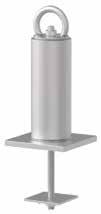

Beacon continues its expansion in 2023, announcing that it has opened four new locations, two in Texas, one in Florida and one in Tennessee. With the latest branch openings, the company has nearly achieved its 2023 projection of 15 openings in just half a year.
The new branch in Ruskin, Fla., is in Hillsborough County, part of the greater Tampa-St. PetersburgClearwater market. “This location adds further service for customers in our Tampa Beacon OTC network,” said Jack Gill, Beacon’s Florida Regional Vice President. “We are pleased to open along the Interstate 75 corridor to optimize deliveries and increase convenience for contractors needing to pick up building materials for residential and commercial projects.”
Gulfeagle Supply announces changes in leadership following Doug Stringfellow’s plan to retire this fall while helping to transition the leadership team. He has been with Gulfeagle Supply since the acquisition of his family’s distribution company in 1995. Doug has played a
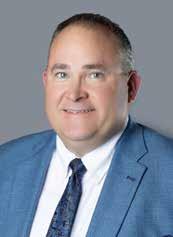


vital role in Gulfeagle’s growth and success over the past 28 years with the company.
Brad Powers has been promoted to Vice President of Sales and Operations for the Southeast. Ben Zwolski has been promoted to Regional Manager for North and Central Florida to fill Power’s previous role. Ben has been with Gulfeagle for over 20 years, most recently as the Longwood Branch Manager. Kurt Schwahn will now oversee both sales and operations as Executive Vice President of Sales and Operations for the company. The promotions from within demonstrates the company’s commitment to its core value of “development of people.”

After 20 years serving as President of Atlas Roofing Corporation, Ken Farrish has announced his retirement. Ken leaves behind a legacy of industry leadership, financial stewardship and employee development, building an organization that embodies a culture of cultivating “Products with Purpose and People with Passion.”
Building on a strong foundation, Ken transformed the organization by embracing the rise of technology, investing in capital projects that improved the customer experience and developing a management team that always strives to put employee growth and team building above all else. This approach led Atlas to sustainable growth in each of its four divisions: Atlas has become a proven leader in the building materials industry.
With Farrish’s departure, Atlas is pleased to announce that Ken Roberts assumed the role of President on July 31. Ken has had a successful 30-year career at Masco Corporation. He most recently served as President of Delta Faucet. Previously, he held the positions of President of Masco Canada, VP of International Sales, VP of Specifications and National Accounts, VP of Asian Business and numerous other roles in purchasing and manufacturing. Prior to Masco, Ken worked in GE’s Aircraft Engine Division.
Known for his ability to build teams and manage complex projects, Ken operates with intention and transparency. He is passionate about embracing and celebrating differences and focuses on accountability and enabling individual and team success.
Ken holds a bachelor’s degree in Mechanical Engineering from Rose-Hulman Institute of Technology, as well as a master’s degree from Northwestern University in Business Administration and Engineering Management.


Lakeside Construction Fasteners, Inc. (LCF) is pleased to announce the promotion of Eric J. Velliquette to President. Eric has been with Lakeside Construction Fasteners for 10 years, during which time he held the position of Vice President of Sales and Marketing, proving himself by expanding the LCF family brand of products throughout the U.S. and internationally.
Before joining LCF, Eric worked as the Vice President of Sales and Marketing for Atlas Bolt & Screw Company, one of largest fastener manufacturing-distributors in the U.S., servicing the metal building industry. During his tenure with Atlas, Eric earned an MBA and was selected as an Adjunct Professor at Ashland University’s College of Business, located in Ashland, Ohio.
In partnership with owners John and Kyle Lane, Eric has forged continuous growth at Lakeside Construction Fasteners by providing the metal building industry with alternative product solutions, keeping quality a focus and working to develop longterm customer relationships. CEO Kyle Lane stated, “He is confident LCF will continue with a strong future, poised to reach even greater heights under Eric’s leadership.”
Eric’s background in international business, sales, marketing, supply chain management and operations gives him an overall understanding of how to improve
customer satisfaction. His experience, coupled with his ability to motivate strong working teams, will continue to fuel LCF’s ongoing growth and success.
Triangle Fastener Corporation (TFC) has finalized an acquisition agreement with Connective Systems & Supply, Inc. (CSS). TFC has acquired the segment of CSS’s business primarily focused on fasteners for roofing, metal building and mechanical contractors in and around Denver, Colo.
CSS has been a leading provider of fasteners and products to construction industry professionals since its founding in 1985. This segment of their business is supported by approximately 20 employees in two locations who achieved 15 million in sales in 2022.
The acquisition of CSS aligns with TFC’s plans for long-term business growth by developing branch locations in the western U.S. and expanding their catalog of proprietary TFC branded products. In addition to the pending opening of a location in San Antonio, Texas, the integration of CSS assets will mean a total of 27 U.S. locations and a marked increase in the central and western U.S. By utilizing CSS’s employee expertise and existing sales structure, TFC will confidently serve customers locally and across North America from an increasingly strong market position.







Altenloh, Brinck & Co. U.S., Inc., a division of Altenloh, Brinck & Co. Group, which is celebrating its 200th anniversary this year, and is the leading U.S. manufacturer of highly engineered fasteners for use in residential and commercial building material industries under the brand names of SPAX, TRUFAST and TRUFAST Walls. Jason A. Beals has been named Chief Executive Officer, providing transition support is Nikolas Dicke, who has been acting CEO for the last five years. In addition to the appointment of Beals as CEO, Allyn Luce has been named COO for the company.

“I am delighted to announce Jason Beals as our new Chief Executive Officer and Allyn Luce as our Chief Operation Officer. Both Beals and Luce are long-time leaders within the company and are highly involved within our communities. Local leadership and our commitment to our employees and customers will lead to continued success for our business as well as building strong partnerships between ABC U.S. and northwest Ohio, supporting our community to be an attractive place for residents to live and work in our region,” says Dicke.
As a fifteen-year veteran, Beals joined TRUFAST in 2006 starting in finance after graduating from Miami University. Over his tenure, Beals has held various direct and indirect supervisory and leadership roles within the organization and has helped to guide the company’s excellent track record of driving transformation within the commercial roofing industry through the commercialization of high-quality, engineered fastening solutions. As President for TRUFAST and Chief Financial Officer for Altenloh, Brinck & Co. U.S.. Beals has been instrumental in successfully helping drive the company’s growth, quadrupling the business in size, adding more than 200 jobs, and leading the acquisition of what is now
A contractor contacted me a few weeks ago hoping to get some help with a problem they had encountered. During a reroofing operation, they had penetrated a water line causing damage to the interior of the building and its contents. The damaged water line was located just under the deck. Certainly, there must be some type of minimum clearance that the line should have had below the deck. After all, it’s common knowledge that most mechanically attached (nailed or screwed) roof coverings or systems must penetrate the deck, so why would this line be allowed to be located there? I had to share some bad news pertaining to his immediate problem, but also some good news that will apply in the future.
The code definitely addresses the location and clearances for lines, pipes, conduit and cables in several of the different subcodes and in code references. Examples are shown below. Notice the addition of underscores to demonstrate the many locations in the building that are addressed and the different types of equipment that are specifically covered and methods used to protect them. But the bad news, at least currently, is that the word “roof” doesn’t appear anywhere.
8th Edition
3 GENERAL REGULATIONS
SECTION 305 PROTECTION OF PIPES AND PLUMBING SYSTEM COMPONENTS
305.6 Protection against physical damage. In concealed locations where piping, other than castiron or galvanized steel, is installed through holes or notches in studs, joists, rafters or similar members less than 1-1/4 inches (32 mm) from the nearest edge of the member, the pipe shall be protected by steel shield plates. Such shield plates shall have a thickness of not less than 0.0575 inch (1.463 mm) (No. 16 gage). Such plates shall cover the area of the pipe where the member is notched or bored and shall extend not less than 2 inches (51 mm) above sole plates and below top plates.

Note: The 1-1/4-inch dimension was changed from 1-1/2 inches in the 2020 Florida Building Code – Plumbing 7th Edition and was carried over to the 8th Edition.
SECTION 308 (IFGS) CLEARANCE REDUCTION
308.1 Scope. This section shall govern the reduction in required clearances to combustible materials, including gypsum board, and combustible assemblies for chimneys, vents, appliances, devices and equipment. Clearance requirements for air-conditioning equipment and central heating boilers and furnaces shall comply with Sections 308.3 and 308.4
SECTION 404 (IFGC) PIPING SYSTEM INSTALLATION
404.4 Piping in solid partitions and walls. Concealed piping shall not be located in solid partitions and solid walls, unless installed in a chase or casing.
404.7.1 Piping through holes or notches. Where piping is installed through holes or notches in framing members and the piping is located less than 1-1/2 inches (38 mm) from the framing member face to which wall, ceiling or floor membranes will be attached, the pipe shall be protected by shield plates that cover the width of the pipe and the framing member and that extend not less than 4 inches (102 mm) to each side of the framing member. Where the framing member that the piping passes through is a bottom plate, bottom track, top plate or top track, the shield plates shall cover the framing member and extend not less than 4 inches (102 mm) above the bottom framing member and not less than 4 inches (102 mm) below the top framing member.
404.7.2 Piping installed in other locations. Where the piping is located within a framing member and is less than 1-1/2 inches (38 mm) from the framing member face to which wall, ceiling or floor membranes will be attached, the piping shall be protected by shield plates that cover the width and length of the piping. Where the piping is located outside of a framing member and is located less than 1-1/2 inches (38 mm) from the nearest edge of the face of the framing member to which the membrane will be attached, the piping shall be protected by shield plates that cover the width and length of the piping.
404.7.3 Shield plates. Shield plates shall be of steel material having a thickness of not less than 0.0575 inch (1.463 mm) (No. 16 gage).



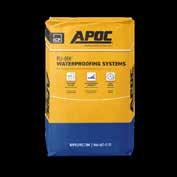

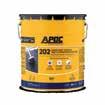






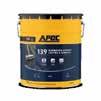
8th Edition
SECTION 305 PIPING SUPPORT
305.5 Protection against physical damage. In concealed locations where piping, other than castiron or steel, is installed through holes or notches in studs, joists, rafters, or similar members less than 1-1/2 inches (38 mm) from the nearest edge of the member, the pipe shall be protected by shield plates. Protective steel shield plates having a minimum thickness of 0.0575 inch (1.463 mm) (No. 16 gage) shall cover the area of the pipe where the member is notched or bored and shall extend not less than 2 inches (51 mm) above sole plates and below top plates.
Electrical Code (NEC)
Protection Against Physical Damage, NEC 300-4


NEC Article 300.4, sub-section D – Cables and Raceways Parallel to Framing Members.
In both exposed and concealed locations, where a cable- or raceway-type wiring method is installed parallel to framing members, such as joists, rafters, or studs, the cable or raceway shall be installed and supported so that the nearest outside surface of the cable or raceway is not less than 1-1/4 inches (31.8 mm) from the nearest edge of the framing member where nails or screws are likely to penetrate. Where this distance cannot be maintained, the cable or raceway shall be protected from penetration by nails or screws by a steel plate, sleeve, or equivalent at least 1/16 inches (1.59 mm) thick.
As shown in the previous excerpts, the code clearly demonstrates concerns for the locations and clearances of lines, pipes, conduit and cables, all meant to reduce the possibility of them being damaged. It addresses locations that have a lower likelihood of being
damaged compared to roofs that are roofed and then reroofed many times during the building’s life, each time exposing mislocated items to potential damage. Unfortunately, this lack of consideration for such an important part of a building – the roof – is nothing new. Addressing these and other similar long-standing roofing-related oversights is just one reason it is so important that FRSA, along with our industry allies, stay involved in the codes arena. We need to continue to make important changes to correct these oversights. Which brings me to the good news.
During the development of the 7th Edition Florida Building Code (2020), the Florida Roof Deck Association submitted a code modification to add new language to Section 1510 of the FBC Building titled “Cable and raceway-type wiring methods” that is shown below. It deals primarily with prohibiting the installation of wiring between a metal deck and the roof covering. This installation method has been used in many instances within a Lightweight Insulating Concrete (LWIC) pour. This practice definitely has safety implications when using a roof cutter or when installing fasteners on that type of deck where concealed wiring exists between the structural portion of the deck – steel or concrete – and the poured deck’s surface. The modification was accepted in the 2020 code and is included below as it appears in the 2023 code.
CHAPTER 15 ROOF ASSEMBLIES AND ROOFTOP STRUCTURES
SECTION 1510 ROOFTOP STRUCTURES
1510.11 Cable and raceway-type wiring methods. Cable- and raceway-type wiring methods installed on rooftops and not encased in structural concrete shall
be supported above the roof system and covering. Cable- and raceway-type wiring methods installed in locations under metal-corrugated sheet roof decking shall be supported so there is not less than 38 mm (1-1/2 in.) measured from the lowest surface of the roof decking to the top of the cable or raceway. A cable or raceway shall not be installed in concealed locations in metal-corrugated sheet decking–type roof. This change was strongly supported by FRSA and opened the door for us to request a modification for the 2023 code. During the latest code development cycle, FRSA submitted a modification (shown below) that was approved. It establishes a required clearance of 1-1/2 inches below the deck in almost all situations.

1510.12 Lines, pipes, conduit and cables under roof decks
Lines, pipes, conduit and cables installed below the roof deck shall have a minimum clearance of 1-1/2 inches from the lowest surface of the roof deck except where they penetrate the roof deck.
Exclusion: Lines, pipes, conduit and cables installed under structural concrete decks.
This new FRSA language establishes a foothold to include similar requirements in the other code sections (previously shown), where it has been overlooked in the past. This change will not eliminate these conditions where they currently exist, but it does help by establishing that some expectation of clearance
is reasonable. It will apply to new construction and alterations including the installation of any new line, pipe, conduit and cable runs. The code increasingly requires fire sprinkler systems. These systems present a large potential for water damage – not only where the cause of activating the system occurs but throughout the entire zone, such as an entire condo wing or floor. There are other similar issues that our Codes Committees should discuss for possible modification proposals. They include the far from clear sections in the code that address clearance, routing and protection of lines, pipes, conduit and cables above the roof. Roof mounted solar panels and modules and the related wiring in both residential and commercial applications are becoming more common. The issues encountered due to the proliferation of mechanical units and equipment on low-slope commercial and multi-family roofs are being further complicated by cellular communication equipment installations. If our industry and FRSA do not address these issues, they will continue to be overlooked.
Mike Silvers, CPRC is owner of Silvers Systems Inc. and is consulting with FRSA as Director of Technical Services. Mike is an FRSA Past President, Life Member and Campanella Award recipient and brings over 50 years of industry knowledge and experience to FRSA’s team.

 Riku Ylipelkonen, Owner, Standard Building Advisors and FRSA Technical Advisor
Riku Ylipelkonen, Owner, Standard Building Advisors and FRSA Technical Advisor
For anyone that has been involved in a roofing project, product approvals are an integral part of the process and are often overlooked considering the effort and expense that go into them. In the most basic terms, the building code defines the minimum threshold of performance for a roof. In Florida, the 900-pound gorilla is wind uplift requirements. The whole process of construction is regulated by the building code to ensure that the life safety of the occupants of the building is preserved during a wind event. Design pressures, live loads, deadloads and more are all meant to cover the needs of performance for any portion of the building. Wind speed maps and project site conditions help to focus the requirements for the roof system to be used on the project. To this end, there is a lot of math involved to determine the requirements of how the roof can be constructed. In Florida, integral components of the roofing system (see the dropdown list on page 18) need to substantiate a product’s ability to perform to the requirements of the specific project. Furthermore, the compatibility with other products in the assembly must be substantiated as well because all the components must become a working roof system.
Low-slope roofing systems are, for the most part, easier to design because the testing of each system of components is performed and defined in the Florida Building Code approvals and Miami-Dade Notice of Acceptance (NOA) approvals. As one of my previous managers told me about low-slope roofs, think of it as building a cake. Each layer must work with the one
below it and the one above it, from deck to sky. Once you meet design, waterproofing, uplift and warranty requirements, you need to find the approval for the cake assembled as needed. If you have had to find one of these approvals in the past, you know the variety and sheer number of approvals is enough to make your head spin. Hearing that a specified component is backordered or not available will bring a twitch to your forehead because you know you must dive in and find a suitable substitution with a corresponding approval.
Steep-slope roofing systems are a little different. Components are most often tested by individual manufacturers and published with their respective approvals. Then, the roofer must assemble the components in a way to ensure that the system will work when properly assembled and installed. This important and potentially liability-laden process most often falls on the roofing contractor. As an example, you may not be able to use the same underlayment systems under shingles and metal. They are different applications and may require different considerations. Roof tile is even more unique. Because tile roof systems are not tested as a system, you cannot assume the mechanically attached tile will keep the underlayment in place during a wind event. To comply with code, the underlayment system must be installed in a way to ensure it can perform to the requirements of the project without the aid of the tile assembly on top of it.
The new code coming into effect at the end of the year is making a change to tile underlayment testing. Code will now require design pressure testing and performance reporting on approval evaluation reports. This will help roofers comply with the required design pressures for the project they are working on. Some of the prescriptive ways of showing compliance are going to be eliminated, but any system that is tested and has the performance reported in its approval, will be allowed to be used. This will be a pain point for the product manufacturers who must spend money and time to anticipate what the market will need. The assemblies you need may not be readily available as we transition to these new requirements but this will also be a great opportunity for innovation and new products to come into the market. Do you want to use cap nails instead of nails and tin-tags to

ProVia barrel tile metal roofing combines the timeless beauty of Spanish clay tile with the unrivaled strength of metal roofing. This 26-gauge galvanized metal roofing system is engineered to withstand 130-mph winds, damaging hail, torrential rain, and intense UV rays, and is backed by a limited lifetime transferable warranty. Give your customers the best of both worlds: style and substance.
It’s the right thing to do.
Learn More provia.com/metalroofing/barrel-tile/
back-nail underlayment courses? How about a 30/90 hot-mopped system? Ask your product sales representatives to get the testing done and updated into the approval. This is a great opportunity for communication with the manufacturers so that they can better understand the realities of roofing and what they can do to improve their products or approval options to gain more market share. There is also a benefit on the contractor’s side of the bargain. Having tested assemblies for how you want to roof gets the manufacturer’s skin in the game as well. If the tested assembly fails for some reason, the manufacturer has an interest in making sure the tested assembly works as designed and the assembly makes sense to keep available on the market. This is where innovation and creativity will change the way we roof tomorrow.
Florida Administrative Code
Florida Product Approval Section 61G20-3.002

Definitions
(33) Subcategory of product or construction system means a specific functionality: (d) For roofing products: built up roofing, modified bitumen roof system, single ply roof systems, spray applied polyurethane roof system, roofing fasteners, roofing insulation, asphalt
shingles, wood shingles and shakes, roofing slate, roof tile adhesives, cements-adhesives-coatings, liquid applied roof systems, underlayments, metal roofing, roofing tiles, waterproofing, roofing accessories that are an integral part of the roofing system and products introduced as a result of new technology;
FRM
Riku Ylipelkonen, Owner, Standard Building Advisors has been in the roofing industry for 15 years working for Polyfoam Products. When Polyfoam Products was acquired by 3M, the name was changed to ICP Building Solutions Group. Riku worked at ICP as Technical Services Manager until March of 2023, when he left to start his own company. Riku is an engineer and is working as a consultant with FRSA. He is a member on FRSA’s Codes Committee, Codes Subcommittee, Tile Committee and on the FRSA-TRI Manual Rewrite Committee. Riku is also a member of the American Society of Civil Engineers (ASCE) and the Single Ply Roofing Industry (SPRI).





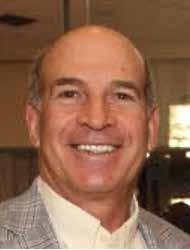
Here’s an outlandish suggestion: fire some of your customers. Most business executives and managers devote a significant amount of time to expanding their customer base by selling more products and services to more people. Most never consider the possibility that some of those customers, including some who have been with them for years, are unprofitable, are very difficult and make no referrals. If you get rid of them, your sales may drop, but your profits could rise.
I did some strategic planning for a small steel fabrication shop a few years ago. Their largest customer was extremely demanding, not only in terms of delivery and quality, but also in terms of price. That customer never passed up an opportunity to bargain for a lower price. Both the shop owner and the sales manager continued to give in to those price demands because it accounted for over thirty percent of the company’s annual sales. That company went through a reorganization process and was eventually liquidated.
At the time, I was also working for the fabrication shop that had taken over that demanding customer and a portion of its fabrication business. They sat down with the customer at the start of the relationship and went over a detailed list of all the components that needed to be manufactured.
They raised prices for each piece by varying amounts. “Fine, you should do that,” the fabricator said when the customer said he could get a cheaper item from another supplier. Today, that company continues to manufacture the majority, but not all, of those parts and profits not only from that customer’s work, but also from their overall business.
You might consider firing a customer for a variety of reasons. For instance, if you do business with a company that is notorious for paying invoices late, you should request a copy of their financial statements. If the late payments are due to a financial emergency, don’t be concerned about the revenue impact of losing that customer. Consider the impact of a bad debt write-off on the company’s entire receivable. You can’t afford to deal with a customer who isn’t likely to pay.
If the customer’s financial situation does not appear to be overly precarious, simply inform them that you require a written agreement for extended payment terms. Then add the cost of carrying that receivable for another thirty days to the prices you charged that customer. If they refuse to accept the price increase, insist on prompt payment. Your company is not a bank for your customers. If a customer has a history of late payments and refuses to provide you with their financial statements, you should consider firing them.
Most managers have heard many times “Twenty percent of your customers will usually represent over eighty percent of your annual sales.” If this is the case with your business, you should look into the profitability of serving a large number of small customers. If the cost of maintaining a customer relationship is disproportionately high in comparison to the revenues and gross profits generated, consider firing that customer or raising prices.
There are other customer demands that can result in a de facto price cut and the elimination of profits for that specific account. Continual back-charges due to real or perceived quality issues, as well as other reasons the customer might use to pay less than the invoiced amount, are among them. Furthermore, if a customer’s demands or delivery requirements necessitate constant overtime work, the increased production costs will reduce the account’s profitability toward zero or below.
A remote customer’s delivery costs should also be factored into their pricing calculations. Those delivery costs are just as real as direct labor and materials costs. You should not continue to serve a customer if the delivery costs exceed the account’s profitability. I recently worked with a client whose firm manufactures a bulky product with a low gross margin. They found co-packers who would gladly privately label materials and ship to that customer in their markets in order to service a large and important customer throughout an area that included cities beyond their profitable shipping radius. My client’s company is more profitable and the customer is happy.
The rule is simple: you shouldn’t have an account that isn’t profitable. Rather than squandering money on customer service, let your competitors handle it. Your business will be more powerful, while your competitors will be less so.
Of course, in a customer relationship, price and profit aren’t the only factors to consider. Some people are simply too difficult to deal with; a customer who is consistently unsatisfactory should be avoided.
Every business owner should review their entire customer list with their sales managers at least once
Continued on page 30

In 2022, the percentage of employees in the general U.S. workforce testing positive for marijuana following an on-the-job accident increased to its highest level in 25 years, according to a new analysis by Quest Diagnostics, the world’s leading provider of diagnostic information services.
Last year, post-accident marijuana positivity of urine drug tests in the U.S. workforce was 7.3 percent, an increase of 9 percent over the previous year. The new peak follows a steady increase in post-accident marijuana positivity every year from 2012 to 2022. In that 10-year time frame, post-accident marijuana positivity increased 204.2 percent. From 2002 to 2009, post-accident marijuana workforce positivity declined.
These increases in post-accident marijuana positivity correspond with legalization of marijuana in certain states. In 2012, Colorado and Washington became the first states to legalize marijuana for recreational use. Since then, 19 additional states and the District of Columbia have legalized the recreational use of marijuana and 38 states (plus the District of Columbia) have legalized medical use, although any kind of use remains illegal under federal law.
ROOFING
5,000 Industry Professionals
100,000 Industry-focused Digital Impressions monthly
“Intoxicating cannabis products, including marijuana, can have a major impact on safety at work and has been proven to slow reaction time, impact memory and impair skills essential to driving. State legalization of the drug creates new challenges for employers,” said Katie Mueller, a Senior Program Manager at the National Safety Council focusing on cannabis safety. “The Quest data provides compelling evidence that increased use of cannabis products by employees can contribute to greater risk for injuries in the workplace. It is imperative employers take the proper steps to create and maintain a policy that addresses cannabis use, build a safety-focused culture and educate the workforce to keep all workers safe on and off the job.”
In 2022, the combined U.S. workforce urine drug positivity for all drugs persisted at 4.6 percent — the highest level in two decades. The 2021 and 2022 positivity rates were the highest since 2001, up more than 30 percent from an all-time low in 2010-2012.
While marijuana was the main driver of workforce positivity increases in the workforce, amphetamines positivity also contributed to the increase. Positivity for marijuana increased 10.3 percent and amphetamines positivity increased 15.4 percent. While the company’s amphetamines data do not differentiate between prescribed medications and illicit drug use, the increase correlates with other data suggesting that the use of amphetamines, prescribed or illicit, has grown in recent years in the U.S.
The rising overall drug positivity rate for general workforce urine testing was observed widely across U.S. industries. “Our 2022 Quest Diagnostics analysis shows that the overall U.S. workforce positivity rate continued to be at a historically elevated level in 2022, even as much of the nation’s workforce returned to the office post-pandemic,” said Keith Ward, General Manager and Vice President for Employer Solutions at Quest Diagnostics. “This historic rise seems to correspond with sharp increases in positivity for marijuana in both pre-employment and post-accident drug tests, suggesting that changing societal attitudes about marijuana may be impacting workplace behaviors and putting colleagues at risk. The increase in amphetamines positivity is also notable, given the addictive potential and health risks associated with this class of drugs.”
“Year-over-year and five-year data point to continuously higher workforce drug positivity overall, by industry and across multiple drug categories,” said Suhash Harwani, PhD, Senior Director of Science for
Employer Solutions at Quest Diagnostics. “As employers express concern for employee health, wellness and safety, they may want to consider this data as a warning sign, particularly as a growing body of science demonstrates the risks of marijuana to mental and physical health.”
“States that have legalized recreational and medical marijuana use exhibit higher positivity rates than the national average. States that have not legalized marijuana appear to have positivity rates below the national averages,” said Dr. Harwani. “Overall, post-accident and pre-employment positivity test rates among the federally mandated, safety-sensitive population have always been lower, suggesting the expectation of testing may be a deterrent.”
Urine positivity rates for post-accident testing increased over five years. The rise in marijuana post-accident positivity among private employers mirrored an increase in overall drug positivity in individuals tested post-accident. Rates of post-accident drug positivity increased both year over year and over the past five years in nearly all specimen types tested.
Post-accident testing is conducted to evaluate whether drug use may have played a role in a workplace incident prompting the drug test. Both post-accident and pre-employment drug testing aim to protect non-drug using workers from others who may use drugs in the workplace and pose a danger.
U.S. workforce positivity plateaued at a 20-year high. The overall positivity rate based on more than nine million urine drug tests was 4.6 percent in 2022 and 2021, an increase of 31.4 percent from the all-time low just 11 years ago.

Over five years, workforce positivity increased in every industry category. Accommodation and Food Services led the way with a 42.9 percent increase in positivity and Construction increased 14.6 percent. Marijuana, cocaine and amphetamines showed widespread increases across industry sectors.
Florida employers need to understand that workers’ compensation may not cover those who have been injured on the job and test positive for a controlled substance.
Quest Diagnostics empowers people to take action to improve health outcomes. Derived from the world’s largest database of clinical lab results, diagnostic insights reveal new avenues to identify and treat disease, inspire healthy behaviors and improve health care management. Quest annually serves one in three adult Americans and half the physicians and hospitals in the United States, with nearly 50,000 employees that understand, in the right hands and with the right context, diagnostic insights can inspire actions that transform lives.

Being a construction worker is one of the most dangerous and potentially fatal jobs. There are roughly 150,000 construction jobsite injuries each year with one in five deaths among U.S. workers. Despite bulky safety gear and protocols that are meant to keep construction workers safe, they are still prone to accidents that could cause serious injuries and may even be fatal. Here are a few tips to stay safe on the job:
Suiting up is one of the most important steps before beginning a job. Safety gloves, hard hats, safety goggles, ear plugs and other necessities should always be worn. Take a few extra minutes to ensure you have on injury preventing gear to keep yourself safe and be sure to utilize safety technology as well.
The clothes you wear can also be part of your gear. Wear durable clothing that can protect your body from potential hazards. Reflective vests can ensure you’re visible if you’re working at night, long sleeved shirts and long pants that cover every inch of your body can protect you from cuts and scrapes, etc. Don’t just protect the obvious areas of your body (eyes, head, hands), keep your entire body safe from danger.
Most tools are used daily and after constant use, they’re likely to need replacing. Be sure to recognize which tools are worn and which aren’t working as they should be and replace them. Not only can this make the job go more smoothly, it can also decrease your risk of potential injury. Take the time at the beginning or end of the day to assess the condition of your tools and update them when necessary.
While your end goal might be to move on to the next job, rushing may mean a botched job and having to come back later; it can also put you at risk. Taking shortcuts can lead to accidents that can put you in a dangerous situation, expose you to hazards and cause injury. Take a few extra minutes to be sure the job is done right and safely – you’ll end up thanking yourself later.
With experience and wisdom often comes ways to save time and still achieve quality work, however sometimes when it comes to safety, shortcuts are dangerous. Stick to the fundamentals. Climbing a ladder as you were taught early on or using a harness when working at heights can make a major difference in safety. Following the basics is tried and true.
When working in places with no controlled temperature for hours, it’s important to recognize when you need to take a break from the job. Take a minute or two away from the job to cool yourself down (or warm yourself up). Staying hydrated and fueled throughout the day can ensure you’re in the best physical condition to handle a job. You know yourself best and if you begin to feel light-headed, over-heated or tired, remove yourself from a potentially dangerous situation until you feel better.
Not all jobs are the same, so evaluating the situation before beginning can save you trouble in the long run. Take a few minutes to assess the work area for potential hazards such as slippery surfaces, exposure to dangerous chemicals or wires, temperature changes, etc. Rushing to get into a job to get it done will not only put you at risk but can cause you more work in the end. Inspect the entire area for cords, equipment, etc. and notice any defects that may be a hazard. By taking a look at what the job requires, you can avoid dangers and will be able to determine what gear you’ll need.
AD+D coverage, otherwise known as Accidental Death + Dismemberment insurance is important to protect your family financially if something happens to you. If you’re the sole or only person working in your household, this is especially important for your family to be able to pay bills, cover medical costs and other expenses. Whether your accident is fatal or you’re stuck in bed recovering for months, the right AD+D insurance can give you and your family peace of mind. Tip: When you do go shopping for AD+D coverage, make sure you look at the types of accidents covered because not all policies cover all types of accidents.
Omar Kaywan, Co-founder and Chief Growth Officer, Goose Insurance, is an expert in the insurance industry and brings over 15-plus years of experience to Goose Insurance with expertise in growth, marketing, media and more.



Project planning, a cardinal aspect of project management, is an essential component in every phase of a roofing project. Take, for instance, when owners decide to build a new facility. They create a comprehensive plan to obtain what they need. Although the blueprint may seem straightforward, its implementation can be quite intricate.
The process involves identifying the need explicitly, setting a budget and determining a completion date. Subsequently, a proficient team capable of designing and building the facility is assembled. The project is monitored consistently throughout its lifecycle. Key players in the process include designers, contractors, specialty contractors and material suppliers, all of whom execute their part in the project with profound detail.
This article will guide you through the primary elements of project management planning used in the roofing industry. Remember, planning is pivotal to any task, whether it is management-focused or leans towards field execution.
As a project manager, you grapple with a multifaceted and perpetually changing time frame. You need a simple and communicable process to manage and adjust many job activities and sequential project relationships.
This can be achieved using a three-phase procedure comprised of planning, scheduling and time monitoring. During the planning phase, you will outline the work to be done, determine how it will be executed and set the order of completion. The scheduling phase will outline the project components’ start and end dates, while time monitoring involves comparing the actual job progress with the planned schedule.
The planning phase is both the most challenging and significant facet of job management. It demands an intimate understanding of roofing construction methods and an ability to visualize and establish the interdependencies between separate work components. Gathering information from key personnel, such as estimators, superintendents, forepersons and subcontractors, is crucial. This participatory approach to the planning phase development helps detect potential
issues early and ensures the steps toward resolution commence ahead of time.
Roofing project planning can be divided into five key steps:
■ Determine the project’s general approach
■ Segment the project into executable “workflows”
■ Identify the subsequent relationships among these activities
■ Create a graphical presentation of this planning information
■ Secure the project team’s buy-in.
Job activities represent individual work steps with a clear beginning and end and a definable time frame for completion. These activities might illustrate large portions of a project or be restricted to smaller steps.
Job logic denotes the order of completion for these activities. Some activities are dependent on others, while many can coincide. Job logic often follows the established standard roofing trade work sequences. However, there can be multiple viable approaches for any project, making it essential for project managers to distinguish the most suitable alternatives.
A realistic job plan must consider practical restrictions that may apply to job activities. These limitations range from physical and resource constraints to time-consuming activities. Acknowledging and considering these constraints is a crucial part of job planning. Overlooking these limitations can jeopardize an otherwise qualified job plan.
Two planning methods often employed are Beginningto-End Planning and Top-Down Planning with a work breakdown structure (WBS). Beginning-to-End Planning involves envisioning a project sequentially, from start to finish. This method can sometimes
overlook crucial operations, leading to underestimation of project duration. Top-Down Planning on the other hand mitigates this by examining the project holistically before breaking it down into principal components.
Computers and software have emerged as irreplaceable tools for planning, scheduling and controlling projects. In an era where planning is the most challenging yet essential phase of project management, digital solutions have revolutionized the process. The complex web of tasks can be devised, revised and visualized right on the computer screen, eliminating traditional manual drafting’s inefficiencies.
With the advent of software, team planning exercises initially carried out on a whiteboard quickly transitioned into the digital realm. The software-aided development of your schedule provides immense flexibility, promotes better comprehension and facilitates collaborative review by other team members. This pooling of skills aids in developing a dynamic plan in a fraction of the time traditionally required.
Moreover, the dawn of virtual environments allows for planning meetings where participants can collaborate from their individual offices or any other location within the company. This availability and convenience
ACCESS TO WORKERS' COMP INSURANCE THROUGH FRSA-SIF


ACCESS TO FRSA CREDIT UNION
BUILDING CODE SUPPORT, HUMAN RESOURCES & LEGAL SERVICES
DISCOUNTS AT FRSA'S ANNUAL CONVENTION & EXPO AND ON ADVERTISING IN FLORIDA ROOFING MAGAZINE
facilitate planning for large and complex projects, enabling you to draw expertise from anywhere within your organization.
In conclusion, effective project management pivots to efficient project planning. Despite the complexity and challenges associated with this process, contemporary project managers can leverage the sophistication of software tools and collaborative planning strategies. These advancements simplify the process and enhance project outcomes, making planning a transformative stage in the project management lifecycle.
John Kenney, CPRC has over 50 years of experience in the roofing industry. He started his career by working as a roofing apprentice at a family business in the Northeast and worked his way up to operating multiple Top 100 Roofing Contractors. As CEO, John is intimately familiar with all aspects of roofing production, estimating and operations. During his tenure in the industry, John ran business units associated with delivering excellent workmanship and unparalleled customer service while ensuring his company’s strong net profits before joining Cotney Consulting Group. If you would like any further information on this or another subject, you can contact John at jkenney@cotneyconsulting.com.
Roofing contractor David Crowther’s CFS Roofing Services, Fort Myers, replaced the 525,530 square foot tile roof on the Cypress Cove retirement community in Fort Myers, with an Englert S2000 series 24-gauge, 1-3/4inch bone white coated roof panel system. Beneath the metal panels, CFS used Polyglass MTS Plus self-adhered underlayment. The roof was fastened with Triangle Fastener Corp ULP (ultra low profile) Pancake Screws. The panels were finished with Titebond Metal Roofing Sealant. Suncoast Roofers Supply was the supplier for the project.
Since this project was a fully-occupied retirement community, COVID restrictions remained in place. As a result, daily check in and check out was required throughout the project’s duration. Masks were required inside construction trailers and during site meetings. Like many projects, supply chain problems proved challenging. Tammy Hall, CFS Roofing






Services’ Director of Marketing and Service Division, noted that Englert worked around the clock to ensure that they had enough clips for the panels.
Each day of the project’s 12-month lifespan required coordination with Howard Wheeler from general contractor Chris-Tel, other trades and the owner’s representatives. The safety plan required a full-time onsite safety monitor. As the project progressed, the copulas, turrets, overhands and other architectural features needed to be covered. These concerns were coordinated building by building with projects reps.
The stellar team from CFS included:
■ Estimator: Julian Ferrer-Padron
■ Project Manager: James Admire
■ Superintendent: Edvin “Gabe” Lopez (Project MVP)
■ Foremen: Jeremias Hernandez and Byron Gutierrez

■ Englert Manufacturer Rep: Tony Delfino.
Fire Some Customers, continued from page 20
Together, they worked to complete this challenging and beautiful roof covering the Cypress Cove retirement community. Congratulations to the team from CFS Roofing Services!

 FRM
FRM
a year. Those who shouldn’t be on the list should be fired. The goal isn’t to maximize revenue: rather, it’s to maximize profits. And don’t forget the old adage: you can’t make up for losses by selling more products at a lower price.
Know who your ideal customer is and know how many you have. Do what you can to attract and retain them and your business will thrive.
FRMMitch Levin, CEO, Corporate Finance Solutions, is a four-time national best-selling author, speaker and
serial entrepreneur, engaged in the corporate finance business since 1990. Through a widely varied career in business, investing and corporate finance consulting, he gained experience in marketing, leadership training, business growth strategies, cash-flow optimization, personal wealth development, management, sales, succession planning, mergers and acquisitions and asset protection planning. For more on Mitch Levin, visit his YouTube channel, amazon.com or www.mitchlevin.com.
We couldn’t agree more.
Peel & Seal® is the best and simplest solution for low-slope roof and flashing repairs. Just peel off the release liner, press into place, and roll smooth to seal the leak. That’s all it takes. Leave exposed for years of worry-free protection.

Learn more at www.mfmbp.com or by calling 800-882-7663.
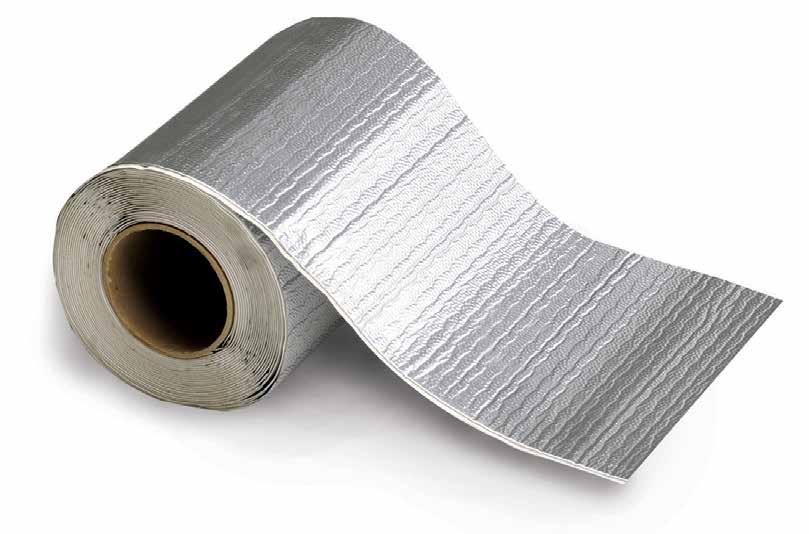
S.T.A.R. Award – SpotlightTrophyfortheAdvancementof Roofing – is an awards program designed by the Florida Roofing and Sheet Metal Contractors Association (FRSA) to recognize members' unique and outstanding projects. A panel of judges evaluates the entries for outstanding performance in each category. The panel also selects one project from all submissions to receive the “Shining Star” Award and recognition as the best roofing project of the year. This year, there are 10 S.T.A.R. Award recipients.
S.T.A.R. AWARD CATEGORIES:
Hurricane Response – A project in which a company responded to hurricane damage in an unusual or extraordinary way.

Craftsmanship in Roofing – A roof system installation where a superior level of workmanship was evident and made the completed project unique in fit, finish or use. Open to any size or type of roof system.
Low Slope – Modified Bitumen/Single Ply (TPO, PVC, EPDM)/BUR-Tar and Gravel/Metal; any variation of the above types of low-sloped roofing systems.
Steep Slope – All shingle, tile, metal, slate, wood shake/shingle or composite material applied as a roof system to a 2:12 or greater roof slope.
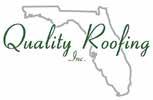

Type of Roof Application: Standing Seam Metal Roof height: Various
Contractor:
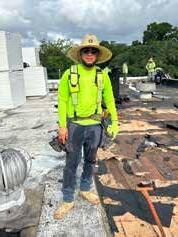
Richard C Jenkins
Estimator:
Richard C Jenkins
Project Manager:
Richard C Jenkins
Superintendent:
Richard C Jenkins
Foreman:
Julio “Junior” Romero
Manufacturer:
Sentrigard
There was nothing “little” about the Little Gasparilla Island project. Quality Roofing helped more than 30 residents after Hurricane Ian destroyed numerous roofs. The logistical complexities proved humbling: trees and debris left behind, no electricity for weeks and many companies lacked the capability to get on the island due to transportation restrictions. Quality Roofing succeeded in moving materials onto the island by barge. Loads of standing seam had to be ordered and tear-off and dry-in required a couple of trips to the island. When the standing seam arrived, QRI crews had to fabricate the panels and deliver them to the island for installation. Overall, a very complicated project but Quality Roofing was up for the challenge.
Project MVP Julio “Junior” RomeroEveryone pays the same workers' comp rate, but does your workers' comp insurance carrier provide you with the potential for a yearly dividend for operating safely? If not, you need to consider the FRSA Self Insurers Fund. These members received their share of $3 million during FRSA's Convention.




the
by email: alexis@frsasif.com

Type of Roof Application: Verea Flat Tile, Copper Flat Lock, Copper Gutters
Roof size: 124 squares
Roof height: Two stories
Contractor: Melinda Ann Nicholas
Estimator: Terrill Brake
Project Manager: Terrill Brake
Superintendent: Rich Lamb (Project MVP)
Foreman: Rich Lamb
Manufacturer: Verea Roof Tile
Supplier: ABC Supply Co Inc
Type of Roof Application: DaVinci 23 Composite Slate, Copper Standing Seam


Roof height: 15 feet
Contractor: Richard C Jenkins
Estimator: Brad Morgan
Project Manager: Luis Angeles

Superintendent: Luis Angeles
Foreman: Mario Angeles
Architect: Davis Bews Design Group
Manufacturer: DaVinci, Polyglass
Supplier: ABC Supply Co Inc
General Contractor: Alvarez Homes
Type of Roof Application: Englert Kynar Standing Seam
Metal, PAC-CLAD Soffit, Siplast Teranap Mod Bit, Wausau Roof Pavers
Roof size: 90,000 sq ft
Roof height: 80 feet
Contractor: Jeff Ganskop
Estimator: Matt Ganskop
Project Manager: Matt Ganskop
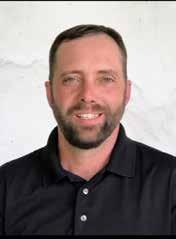
Superintendent: Pat Ganskop
Foreman: Joel Smollack
Architect: Lewis & Whitlock
Manufacturers: Englert, Hunter Panels, PAC-CLAD, Siplast, Wausau Tile
Suppliers: ABC Supply Co Inc, Gulfeagle Supply
Project MVP LuisAngeles Project MVP MattGanskopThis residence was constructed in early 2020 and there were deficiencies with the roof and the waterproofing on the decks of the building. The house and the landscaping were nearly brand new, so extreme caution to protect the client’s property was necessary. West Coast Florida Enterprises decided that the best option would be to erect a scaffold platform around the entire residence. This allowed the team to access the roof and deck areas around the entire property while protecting the exterior finish and landscaping. The reroof was completed in a timely manner with no damage to the property and with a product with which the client was extremely pleased.

Due to material delays, the McInerney Residence, which was already an extensive project, required two years to complete. Quality Roofing, Inc worked with long-time client Alvarez Homes on this ambitious design. The roof consisted of DaVinci multi-width slate, Polyglass MTS underlayment, custom copper standing seam tapered radius turret with copper finial, four rounded copper standing seam dormers, site rolled copper half round gutters, downspouts, chimney cap with standing seams and copper wind screen. It also included copper crickets, goose neck vents, lead flashing sleeve covers, copper saddles and all roof-to-wall and eave flashings in copper. With six roofing slopes from low-slope to 12:12, the QRI team faced many structural challenges but were able to find solutions to complete the project.


This project has been the largest and most varied new construction project that Old World Craftsmen Inc has completed to date. There were numerous aspects of this project ranging from an Englert Kynar finish 22-gauge double-lock standing seam metal roof panel system of approximately 15,000 square feet on a 12:12 pitch, 50,000 square feet of Siplast 20/30 mod bit flat roof, an install of 8,000 square feet of PAC-CLAD aluminum soffit at a ceiling height of 40 feet, architectural gutters, insulating wall and panel system and – the most unique of all – the plaza deck area that boasts a complete green roof system with NVS lightweight concrete, and a multi-layer Siplast mod bit. It also included aTeranap roof system and 7,000 square foot of Wausau roof pavers ranging in size from 2’x2’ to 2’x4’. This was a very large scale new construction project, which meant that many trades were working on the facility at the same time.



Type of Roof Application: Tapered Insulation and Hot Asphalt
Roof size: 84,000 sq ft


Roof height: 20 feet
Contractor: Peter Dzenutis
Estimator: Fred Southern
Project Manager: Peter Dzenutis
Superintendent: Peter Dzenutis

Foreman: Fred Southern
Consultant: Alpine Roof Consulting, Pete San Juan
Manufacturers: CertainTeed, Metal Alliance
Distributor: Sunniland Corp
General Contractor: Roofman Inc

Type of Roof Application: SOPREMA Modified
Roof size: 419 squares low-slope, 40 squares shingles
Roof height: 15 to 50 feet
Contractor: Rob Springer, CPRC
Estimator: Kyle Wise
Project Manager: Cam Raby
Superintendents: Rob King, Jack Donaghy
Foreman: Salvador Pizano
Architect: Zyscovich Architects
Manufacturer: SOPREMA
General Contractor: AD Morgan
Type of Roof Application: JM Dynabase PR, Dynaweld 180 S, Dynaweld Cap 180 FR
Roof size: 81,500 sq ft
Roof height: 11 to 28 feet
Contractor: Rob Kornahrens
Estimator: Cody Stunkard
Project Manager: Juan Goya
Superintendent: Faustino Perez


Foreman: Jose Jimenez
Architect: Song + Associates
Manufacturer: Johns Manville, Al Takacs
Project MVP Fred Southern Project MVP Salvador Pizano Project MVP Faustino Perez

To ensure employee safety, ease of movement and landscape protection, the Roofman Inc team installed custom-built scaffolding. Next, the team reframed and backstayed every existing roof member and added a new roof member in be tween all existing ones. New sheathing was installed and all plywood butt joints seam taped. High temperature metal roof underlayment was installed over the sheathing. The Roofman Inc team chose a CertainTeed three-ply SBS system and fabricated custom radius to accept standing seam panels and flashings for two dozen each of roof plains, walls, windows, radius, sliding doors and balconies.
This project consisted of 419 squares of low-slope roof and 40 squares of shingles spread out over 15 different low-slope roof areas and six shingle roof areas. The low-slope roofing was a SOPREMA modified system and CertainTeed provided the shingles. This project started with weekly and monthly service visits to remove or install penetrations that were being upfitted. Springer-Peterson also ended up building two huge 20x30-foot curbs with covers in different areas so that the HVAC contractor could open them up daily to install new steel and HVAC equipment. These curbs were removed when reroofing started, to leave behind smaller individual AC curbs and stands. This reroof project was completely torn off to the existing decks, which consisted of wood, metal, gypsum and tectum. On one roof area, there had been a second deck and truss system installed. This was also removed to the original deck.

The reroofing project at Dillard Elementary School in Hollywood involved the replacement of an 81,500 square foot built-up roof with a new modified bitumen roof system while the school remained fully operational. Ensuring safety throughout the project was the top priority, with temporary fences and hallways constructed to protect children from construction materials and machinery. Night work was performed with maximum safety measures in place, including debris removal, tight employee formation and tower lights. Despite safety concerns and supply chain issues, the project was completed to the highest quality standards and without injury. Collaborating with roofing consultants, school principal and assistants was essential to the project’s success from start to finish. This project is a testament to Advanced Roofing’s dedication to safety, quality and client satisfaction.
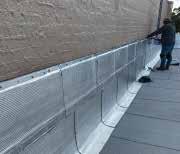

Type of Roof Application: Metal Englert S2000
Roof size: 525,530 sq ft
Roof height: 1 to 4 stories
Contractor: David Crowther
Estimator: Julian Ferrer-Padron
Project Manager: James Admire
Superintendent: Edvin “Gabe”
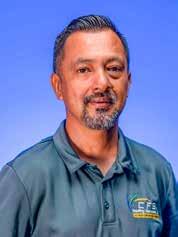
Lopez
Foremen: Jeremias Hernandez, Byron Gutierrez
Manufacturers: Englert, Tony Delfino; Polyglass; Triangle Fasteners; Titebond
Supplier: Suncoast Roofers
Supply
General Contractor: Chris-Tel, Howard Wheeler
Type of Roof Application: Radius Tapered Convex/Concave Panels and TPO

Roof size: 236,000 sq ft
Roof height: 20 to 50 feet
Contractor: Jeremiah Dice
Estimator: Brantley Dice
Project Manager:
Jeremiah Adams
Foreman: Mitch Duncan
Architect: Bentley Architects + Engineers
Manufacturers: Bemo, Tony Thompson; Berridge, Bob Wilinski; GAF, Sean Ramsey
Supplier: Beacon, Jeff Patterson

Type of Roof Application: Enviroslate
Roof size: 55,600 sq ft
Roof height: 121 feet
Contractor: Barry Huber
Estimator: Jamin Huber
Project Manager: David Piper III
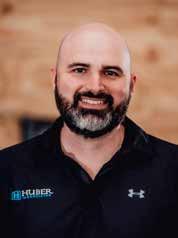

Superintendent: Joseph Metzger
Foreman: Efren Vazquez
Architect: Cooper Carry Inc
Manufacturers: Enviroshake, Mid-States Asphalt
General Contractor: Hunt
Construction Group Inc
Project MVP Edvin“Gabe”Lopez Project MVP Jeremiah Adams Project MVP David Piper IIIThis was a massive reroof of over 525,000 square feet of tile replaced with Englert Metal. Because this project involved a retirement community at Lee Memorial Hospital, COVID protocols remained in place for the duration of the work. The CFS Roofing team overcame these onsite challenges as well as acute supply chain issues. After 12 months of persevering, the results speak for themselves.





The project consisted of several different roof systems, some of which were very complex. The Arrival Conference Center, which was the showpiece of the project, consisted of Bemo radius tapered convex and concave metal roof panels over the top of a Bemo Flex sub framing system. There were numerous hurdles Martin Roofing Services (MRS) had to maneuver throughout the design phase because the original design of this building could not be met by any roofing manufacturer. Bemo was not the original specified system and Martin had to work with Bemo and the architect to redesign the shape of the building for the Bemo system. MRS had to incorporate the Flex system, which required surveyor geolocating and 3D scanning of the building skin.
This luxurious lodge rises from the banks of the Reedy River in Greenville’s beautiful Falls Park. Though beautiful, the location created a congested and logistically challenging jobsite. The roof itself was a massive scope and required special fabrication and fitting. The selection of Charcoal Gray, Sage Green and Plum Dark Purple Enviroslate was carefully blended and installed on about 55,600 square feet of roof, with average pitches of 10:12 and some very steep mansard portions. The Huber and Associates team steam-bent large sections to fit the roofs curved surface, adding to the difficulty of the project.
SHINING STAR
Homestead, FL 33032
(786) 829-2761
Jacksonville, FL 32209
(904) 503-9400
Tallahassee, FL 32304
(850) 574-7600
Odessa, FL 33556
(813) 749-5354
Orlando, FL 32804
(407) 291-7244
Tampa, FL 33619
(813) 740-8790
Fort Myers, FL 33916
(239) 935-5077
Deerfield Beach, FL 33442
(954) 969-8000
Miami, FL 33142
(305) 635-7177
Orlando, FL 32809
(407) 367-6246
Ocala, FL 34474
(352) 622-3933
Melbourne, FL 32904
(321) 369-7892
Ormond Beach, FL 32174
(386) 301-4471
Palmetto, FL 34221
(941) 722-6800
Leesburg, FL 34748
(352) 818-6120
Orlando, FL 32804
(407) 859-9997
Winter Haven, FL 33880
(863) 293-1555
St. Petersburg, FL 33716
(727) 565-4630
Sarasota, FL 34243
(941) 203-6320
Fort Pierce, FL 34982
(772) 466-3461
Stuart, FL 34997
(772) 223-8881
Vero Beach, FL 32960
(772) 778-0549
Orlando, FL 32810
(321) 442-0061
Fort Lauderdale, FL 33315
(954) 525-1158
Riviera Beach, FL 33407
(561) 863-9899
Clearwater, FL 33762
(727) 573-6075
North Port, FL34289
(941) 732-1029
Panama City, FL 32405
(850) 763-0851
Find your local branch with the Beacon PRO+ Mobile App. Download the Mobile App today!

